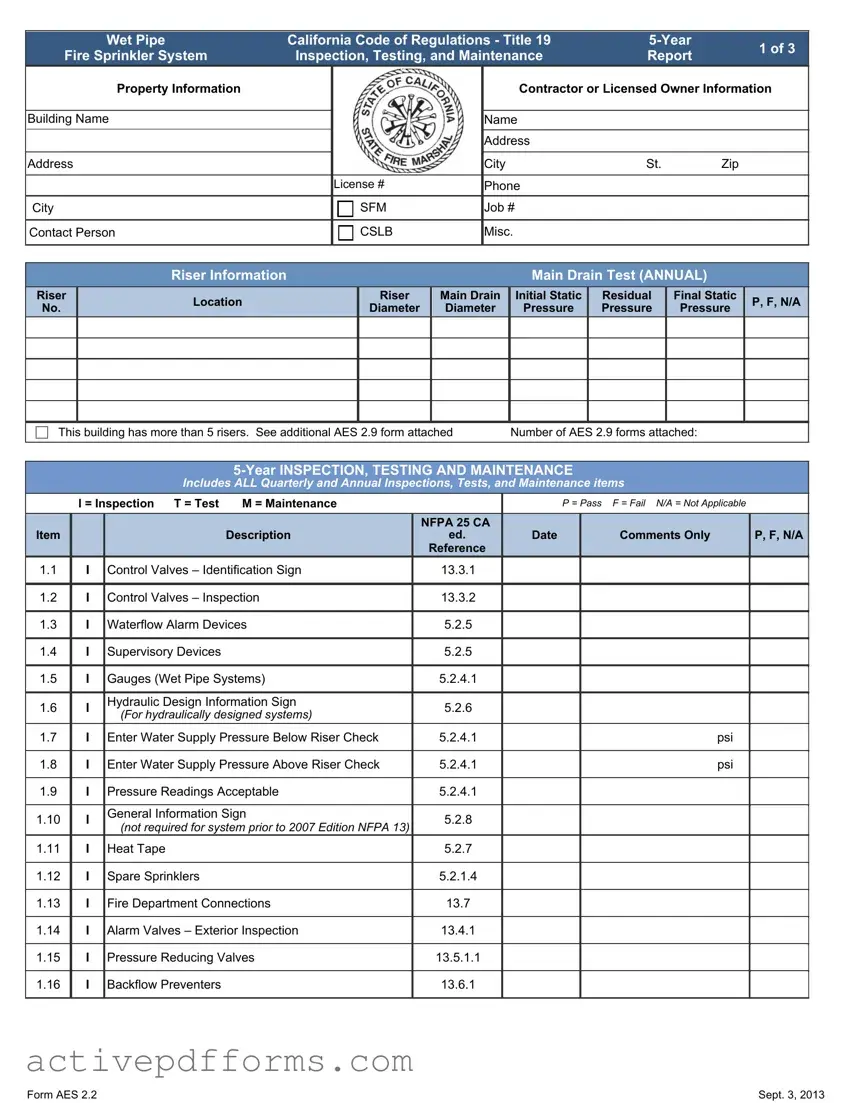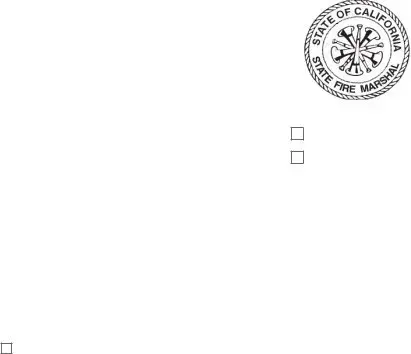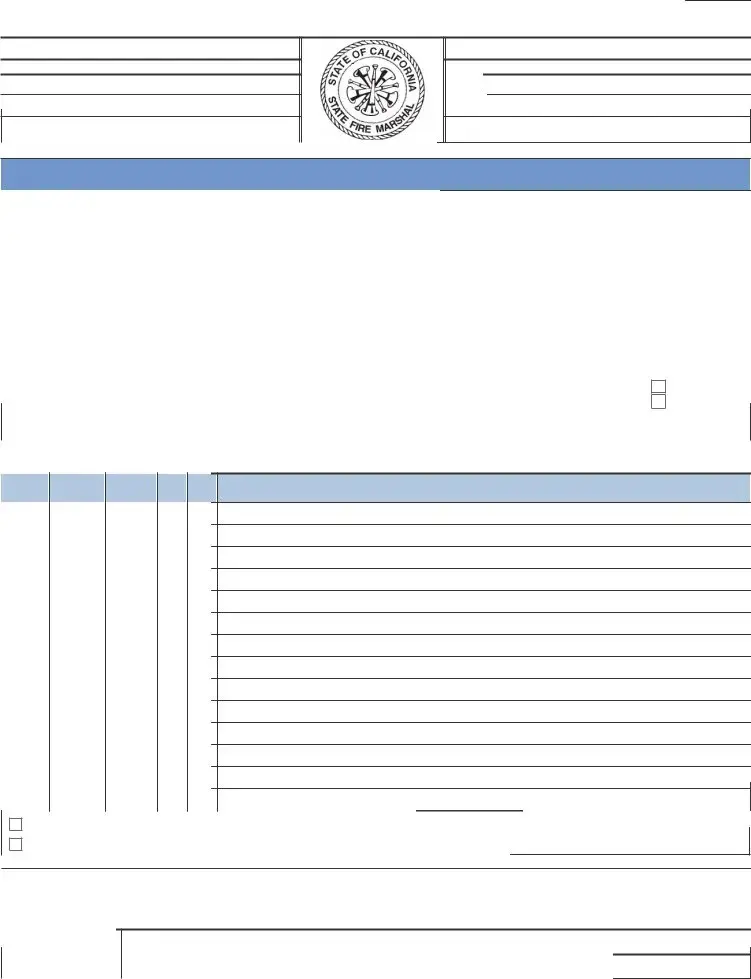Free 5 Year Fire Sprinkler Inspection PDF Template
The 5 Year Fire Sprinkler Inspection form serves as a comprehensive report detailing the inspection, testing, and maintenance activities required by the California Code of Regulations - Title 19 for fire sprinkler systems over a five-year period. It encompasses property and contractor information, along with a meticulous checklist of items to be examined, ranging from control valves to waterflow alarm devices, according to specifications laid out in both state regulations and the National Fire Protection Association (NFPA) standards. This form is an essential tool for ensuring fire sprinkler systems are maintained for optimal performance and compliance with safety regulations.
Edit 5 Year Fire Sprinkler Inspection Now



